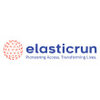Filter interviews by
Kyyba Interview Questions and Answers
Kyyba Interview Experiences
4 interviews found
I appeared for an interview before Mar 2024.
(2 Questions)
- Q1. Basic understanding of javascript, frameworks and their uses and test cases.
- Q2. They inquired about my work experience, my understanding of the project, as well as my experience with bar-raising questions and situation management.
Senior Software Engineer Interview Questions asked at other Companies
I applied via Approached by Company and was interviewed in Oct 2023. There were 2 interview rounds.
(1 Question)
- Q1. Talent Acquisition
(2 Questions)
- Q1. Talent Acquisition
- Q2. Sourcing Assessment
Interview Preparation Tips
I wonder how do these sort of companies exist with zero value to employees or a candidate experience.
HR Recruiter Interview Questions asked at other Companies
I applied via Referral and was interviewed in Feb 2023. There was 1 interview round.
(2 Questions)
- Q1. Test Cases Written for any given Test Module to check the written capability of the job seekers.
- Q2. SOME BASIC QUESTIONS
Interview Preparation Tips
- MS Office
- Team Management
- Management
- Administration
- Oracle
- Marketing
- QA Testing
Not like this, everyone has given equal opportunity as PM. But please maintain decorum Mr. Sharma and SriVidhyalakshmi and Jude and Bala, John Michael Joseph, Rajalakahsmi, Mrs. Nalilni.
QA Engineer Interview Questions asked at other Companies
Human Resource Onboarding Specialist Interview Questions & Answers
posted on 16 Jun 2023
I applied via Naukri.com and was interviewed in Dec 2022. There were 3 interview rounds.

(3 Questions)
- Q1. Briefing about yourself and share the experience relevant work and previous company work flow and technical hand . Details about how many clients you handle in your entire working years
- Q2. Us staffing culture and requirements
- Q3. Depths knowledge about HRM in staffing agency in India and US
(2 Questions)
- Q1. Salary expectation as per my experience and benefits
- Q2. Salary negotiation and medical insurance policy and pf related things
Interview Preparation Tips
- Human Resource Management
- Payroll Management
- Timesheet
- Email etiquette
- VMS
- Job diva
- MSP
- BGC
- DTP
Kyyba interview questions for popular designations
Interview questions from similar companies

Interview Questionnaire
1 Question
- Q1. Software engineering ,OOPS ,Resume and project related ,HR questions ,Strong basics of coding ,Leadership qualities etc.
Interview Preparation Tips

Interview Questionnaire
3 Questions
- Q1. Basic question on python.
- Q2. Detailed information about project
- Q3. Question on joins from dbms

I applied via Company Website and was interviewed in Aug 2020. There was 1 interview round.
Interview Questionnaire
3 Questions
- Q1. My work experience
- Q2. The kind of work I had done
- Q3. Technical questions on Accounting standards and auditing and tax matters
Interview Preparation Tips

Interview Questionnaire
3 Questions
- Q1. 1st round system design questions
- Q2. 2nd round algo ds
- Q3. Hr manager quesions

Interview Questionnaire
1 Question
- Q1. Java basics

I applied via Campus Placement and was interviewed in Oct 2020. There were 5 interview rounds.
Interview Questionnaire
3 Questions
- Q1. Why do you want to join Deloitte?
- Q2. Why should we Hire you?
- Q3. What are your strength and weakness?
Interview Preparation Tips
Kyyba Interview FAQs
Some of the top questions asked at the Kyyba interview -
Tell us how to improve this page.
Kyyba Interviews By Designations
Interview Questions for Popular Designations
- Associate Interview Questions
- Team Lead Interview Questions
- Software Engineer Interview Questions
- Software Developer Interview Questions
- Consultant Interview Questions
- Graduate Engineer Trainee (Get) Interview Questions
- Senior Software Engineer Interview Questions
- Manager Interview Questions
- Show more
Kyyba Interview Process
based on 4 interviews
Interview experience
Interview Questions from Similar Companies
|
Senior Software Engineer
35
salaries
| ₹7.5 L/yr - ₹22.3 L/yr |
|
US Recruiter
22
salaries
| ₹2.3 L/yr - ₹8.5 L/yr |
|
Senior Engineer
18
salaries
| ₹5.2 L/yr - ₹12 L/yr |
|
Software Engineer
14
salaries
| ₹2.3 L/yr - ₹9.6 L/yr |
|
Senior Recruiter
11
salaries
| ₹6 L/yr - ₹11.5 L/yr |

Teleperformance

iEnergizer

Deloitte

Sutherland Global Services
- Home >
- Interviews >
- Kyyba Interview Questions

















